First, magnetic separation test
Magnetic mainly for recycling or removing the magnet and pyrrhotite ore, ferrosilicon and other magnetic medium recovering heavy media beneficiation process, but also commonly used in the processing of ore and other ferrous metals from nonferrous ores, rare Re-selection of concentrate. In addition, magnetic separation has a wide range of applications in the preparation of ceramics and glass materials, the treatment of metallurgical products, the recovery of steel from industrial and domestic waste, and the purification of sewage and waste gas. China's rich and weak magnetic iron minerals, such as hematite, can be sorted by a weak magnetic field magnetic separator after magnetization roasting, or directly by a strong magnetic field magnetic separator.
Magnetic separation is based on mineral magnetic separation of minerals, so the test work generally begins with magnetic analysis, and then in the laboratory magnetic separator machine process test.
1. Magnetic analysis of ore
Magnetic analysis includes two parts: specific magnetic susceptibility measurement and magnetic mineral content determination. The latter is also called magnetic component analysis, similar to the density component analysis of reselection.
The specific magnetic susceptibility measurement method can be found in the magnetic selection of this manual. According to the specific magnetic susceptibility, the minerals can be divided into three categories: (1) ferromagnetic minerals such as magnetite and pyrrhotite, χ greater than 35 × 10 -6 m 3 / kg; (2) weak magnetic minerals , such as hematite, wolframite and tantalite, etc., [chi] is (7.5 ~ 0.1) × 10 -6 m 3 / kg; (3) non-magnetic minerals, such as scheelite, cassiterite, galena and Quartz, etc., χ is less than 0.1 × 10 -6 m 3 / kg.
The magnetic component analysis generally uses a dedicated magnetic analysis device such as a magnetic separator and a Franz type magnetic analyzer.
(1) Magnetic separation tube As shown in Fig. 1, it is suitable for determining the content of ferromagnetic minerals in fine-grained materials. The test device is mainly composed of an electromagnet 1 and a glass sorting tube 3 which is obliquely placed between the magnetic poles at an inclination angle of 40 to 45°. The latter is supported by the carriage 2, and the motor drives the sorting tube to reciprocate up and down and left and right by a transmission device. . In the test, first open the inlet pipe 4, add water to the pipe about 10 cm above the pole, turn on the DC power supply, adjust the excitation current intensity to the specified value, start the transmission device, and then weigh a few grams of sample, set in a small beaker. After wetting, it is slowly fed into the sorting tube. After the sample is added, the water is rinsed from the upper end of the tube, and the lower drain is opened to keep the water surface in the tube constant. At this time, the magnetic ore particles are adsorbed on the inner wall of the tube near the magnetic pole by the magnetic field, and the non-magnetic particles gradually fall and are discharged from the lower nozzle with the washing water. The up and down movement of the glass tube and the left and right rotation facilitate the removal of nonmagnetic particles trapped in the magnetic particles. Generally, after 5 to 15 minutes of continuous rinsing, there will be no more mineral particles flowing out with the water, indicating that the sorting is over. At this point, the current can be cut off and the magnetic ore particles are released. Finally, the magnetic products and non-magnetic products are dehydrated, dried, weighed, and sent to chemical analysis when necessary, thereby calculating the content of magnetic minerals in the ore and the distribution of useful elements in the two products. The particle size of the sample depends on the ore embedding characteristics and test requirements, but it should not be greater than 0.5~1 mm, and the maximum magnetic field strength of the magnetic separation tube can reach 240 kA/m.

Figure 1 Magnetic tube
(2) The magnetic analyzer is shown in Figure 2. It is suitable for dry and wet analysis of the content of weak magnetic minerals. It is mainly composed of iron core 1, magnetic pole 2, excitation coil 3, electric vibration sorting tank 4, electromagnetic vibration. The device 7 and the bracket 8 are composed. There are three types of sorting tanks: a sorting tank with a vibrator for dry separation and a quick sorting tank, and a glass sorting tube for wet separation, the most common one being the first one. 9 is a hand wheel, there are two, which are used to adjust the longitudinal and lateral slope of the sorting tank. When the sorting tank with vibrator is used for dry sorting, the sample flows into the sorting tank from the feeding hopper 5, and gradually flows from the head to the tail in the vibration state, and is magnetically shunted under the combined action of magnetic force and gravity. The two left and right sample strips flow into the two receiving containers 6, respectively. If the shape of the magnetic pole in the magnetic analyzer is designed such that the HgradH (H-magnetic field strength) is equal everywhere in the inter-electrode gap, it is called "equal magnetic analyzer". In the equal magnetic field, the separation precision of the ore particles is high, and the separation result is not affected by the particle size composition. It is best to use the auxiliary sample to explore the sorting conditions, including excitation current intensity, vibrator vibration intensity, longitudinal and lateral slope of the sorting tank. Magnetic components having different specific magnetic susceptibility can be obtained with different excitation current intensities. [next]

Figure 2 Magnetic Analyzer
The processing method of the magnetic component analysis results is similar to the density component analysis. For example, the magnetic selection selectivity curve can be drawn according to the magnetic analysis result of the ore, and the distribution curve of the magnetic component in the magnetic separation product can be drawn according to the analysis result of the ore dressing product.
2. Magnetic separation process test
The task of the magnetic separation process test is to study the selectivity of the ore, determine the ore size, the selection process and conditions, and the possible process specifications.
The test is usually carried out on the basis of magnetic analysis. Strong magnetic minerals are recovered by a weak magnetic field magnetic separator. The magnetic field strength is generally less than 100~250 kA/m. The weak magnetic minerals must be selected by a strong magnetic field magnetic separator. The magnetic field strength is usually 0.5~10 MVA/m. The magnetic separation process is generally simple, but it should also include roughing, finening, and sweeping operations. If necessary, consider using a stage grinding process. During the test, various process parameters shall be adjusted according to the separation conditions, including: feeding ore size, feeding speed, magnetic field strength and replenishment water volume. The strength of the magnetic field is usually adjusted by changing the intensity of the excitation current. Sometimes the working gap between the magnetic poles is also adjustable, but the magnetic field strength and the magnetic field gradient will change at the same time.
The structure of the magnetic separation equipment used in the laboratory is similar to that of industrial equipment except that it is small in size and easy to adjust.
(1) Magnetic separation test of strong magnetic ore
Strong magnetic ore, mainly magnetite ore, the test process depends on the ore size of the ore. The possibility of using a dry magnetic separation or dry-wet combined magnetic separation process is considered first. It is usually necessary to grade before dry magnetic separation. China's common fine-grained iron ore mines, except in water-deficient areas, generally use wet magnetic separation. Need to be tested
Select the number of segments and the fineness of the grinding of each segment. Generally, the grinding process of 1~2 stages is adopted. It is required to increase the number of sorting stages when producing high-purity concentrate. Generally, the drum magnetic separator is used as the main sorting equipment, and the magnetic dewatering tank is used as auxiliary equipment. The magnetic dewatering tank can be used to remove some tailings and fine mud before magnetic separation, and the concentrate concentrates and improves the grade after magnetic separation. Magnetic separation concentrates generally do not require multiple selections.
(2) Wet magnetic separation test of weak magnetic ore
The magnetic separation test of weak magnetic iron ore can adopt two schemes: (1) magnetic separation after magnetic baking, when the magnetic separation method is the same as that of ferromagnetic ore, the key is to do the magnetization roasting test, which we will next (2) Strong magnetic field magnetic separation method, the test procedure is similar to that of weak magnetic ore, that is, magnetic analysis is first performed to judge the possibility of using strong magnetic separation of ore, and the selected particle size is determined accordingly, and then the ore is selected according to the particle size and Mineral magnetic, choose the beneficiation process and test equipment.
1 Wet strong magnetic analyzer can also be regarded as a laboratory-use wet-type strong magnetic separator. It is a small-scale test equipment that has been tested in China for the absorption of foreign Jones and Eriz-type magnetic separators. Hubei Exploration Instruments Both the plant and the Tianjin Mining Instrument Factory are produced, with models XCSQ-50 × 70 and XCQS-79. The equipment structure of Hubei production is shown in Figure 3. Usually the five sorting boxes made of iron plate and two teeth quality aluminum baffle components. The tooth plate is 170 mm high and 80 mm wide. The highest magnetic field strength is 1840 kA/m. The effective sorting particle size is 1~0.038 mm, and the nominal processing capacity of the equipment is 4~5 kg/hr. Three products of fine, medium and tailings can be separated at the same time. This equipment has been tested by most domestic ore dressing test units, which can meet the needs of strong magnetic field magnetic analysis and evaluation optional research work.
2 Imitation industrial type experimental wet magnetic separator is a strong magnetic separation test for beneficiation design service. It is necessary to use more mineral samples and adopt the imitation industrial type strong magnetic separator to carry out the system flow test and condition test. The applicability of the strong magnetic separator to the ore being studied, as well as the appropriate sorting process and operating conditions. Therefore, process research workers are often combined with equipment development work. Many of our mineral processing research units have developed their own wet magnetic separators. For example, the Changsha Research Institute of Mining and Metallurgy designed and manufactured a simulated Jones-type wet-type strong-selection machine for semi-industrial testing. The turntable has a diameter of 1 m and a maximum magnetic field strength of 1360 kA/m, which can be used to treat various weak magnetic iron ore. [next]
3 high gradient magnetic separator High gradient magnetic separator is developed on the basis of ordinary strong magnetic separator. The magnetic field gradient (blind on steel wool medium) is 10~100 times higher than ordinary magnetic separator, up to 8000 × 10 7 amps / m 2 (10 7 gauss / cm), which provides a strong magnetic force for magnetic particles to overcome fluid resistance and gravity, so that fine weak magnetic particles can be effectively recovered, in the case of kaolin purification and water treatment Get industrial applications. In addition to the active research on the manufacture of high-gradient magnetic separators in China, the Jiangsu Geology and Minerals Bureau Test Center and the Beijing Nonferrous Metals Design and Research Institute China Mining Test Center have introduced some experimental high-gradient magnetic separators from abroad. It can be used in all aspects of research work.
(3) Dry magnetic separation test of weak magnetic ore
The dry strong magnetic separation method is currently mainly used for the separation of non-ferrous metals and rare metal ore re-election coarse concentrates. For example, hematite can be separated from cassiterite and scheelite at a magnetic field strength of 640 kA/m (8000 Ã…). Commonly used test equipments are electric disk type and roller type strong magnetic separator, and the sample size is generally not more than 3 mm.
Figure 3 batch operation wet strong magnetic separator
1. agitator; 2. agitating barrel; 3. feeding valve; 4. three-way valve; 5. cooling water jacket; 6. flat mouth moving rod;
7. Copper flat mouth; 8. Excitation coil; 9. Iron core; 10. Sorting box; 11. Bearing bucket;
12,13,14. Fine, medium and tailings collection box; 15. Eccentric wheel; 16. Micro switch
Second, the magnetization roasting test
The purpose of the laboratory magnetization roasting test is only to determine the possibility and general index of the magnetization roasting process, and to provide samples for the next magnetic separation test, and the roasting process conditions can be determined in the intermediate test or even the industrial test.
The test is generally carried out in a laboratory type roaster. Commonly used are tubular furnaces, crucible furnaces, muffle furnaces, and laboratory type shaft furnaces, converters, and boiling furnaces. The furnace type is preferably determined by particle size depending on the depth of the test and the nature of the ore. The process factors that need to be adjusted and investigated in the test are temperature, atmosphere, particle size, time, type and amount of additives, and excess air coefficient. Small coal gas apparatus in a laboratory magnetic roasting furnace shape shown in Figure 4. The particle size of the sample is generally 3~0 mm. The weight of the sample depends on the diameter of the porcelain tube. The reaction tube of 30~40 mm can be fired for 20~30 g sample at a time. The quality of the roasting ore can be checked by magnetic tube. When using a magnetic separator for the sorting test, a large-scale tube furnace with a diameter of 100 mm should be used. At this time, the amount of ore can be 500 to 1000 grams per roasting. Before the test, care should be taken to remove the air from the porcelain tube with nitrogen.
The effect of reducing the granule burning can be evaluated by the ratio of the surface area of ​​the ferrous oxide to the total iron content in the calcined product, that is, the degree of reduction, or directly based on the content of the magnetic component in the calcined product.
Figure 4 Laboratory reduction roasting device
1. Calcium chloride drying tube; 2. Pressure gauge; 3. Gas flow meter; 4. Porcelain tube;
5. tubular electric furnace; 6. thermocouple; 7. high temperature meter; 8. gas lamp
Ferrite Magnet
Commonly, Hard ferrite is a type of ceramic Fe2O3,BaCO3 or SrCo3 compund material.The density of ferrite magnets about 5g/cm3, and they are divided to hard ferrite and soft ferrite.
They are both electrically nonconductive and ferrimagnetic.Of course,they also can as construction magnet. Hard ferrites have higher coercivity and higher remanence after magnetization. Ceramic magnets are cheap and widely used in household appliance such as refrigerator horseshoeshaped magnet, letric motors, teleconmmunication loud speaker,magnetic recording.etc.
Soft ferrite magnet is a sort of Fe2O4,Zinc or Nickel compund material.They have a low coercivity thus called soft ferrites. Because of their comparatively low losses at high frequencies.
They are extensively used in the cores of RF tranformers and inductor in applications of AM redios.
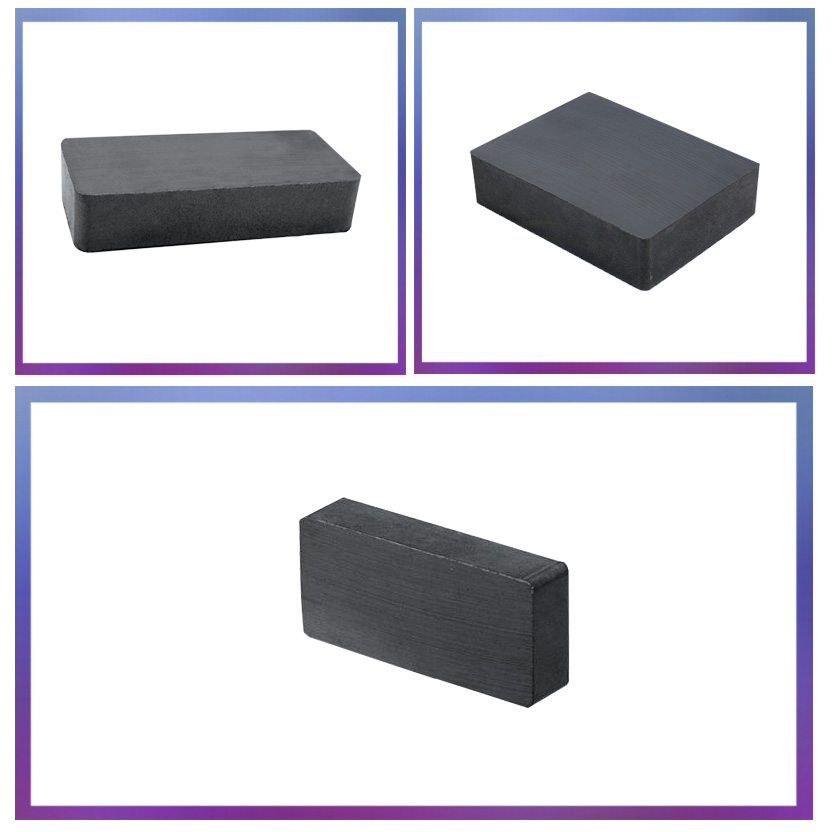
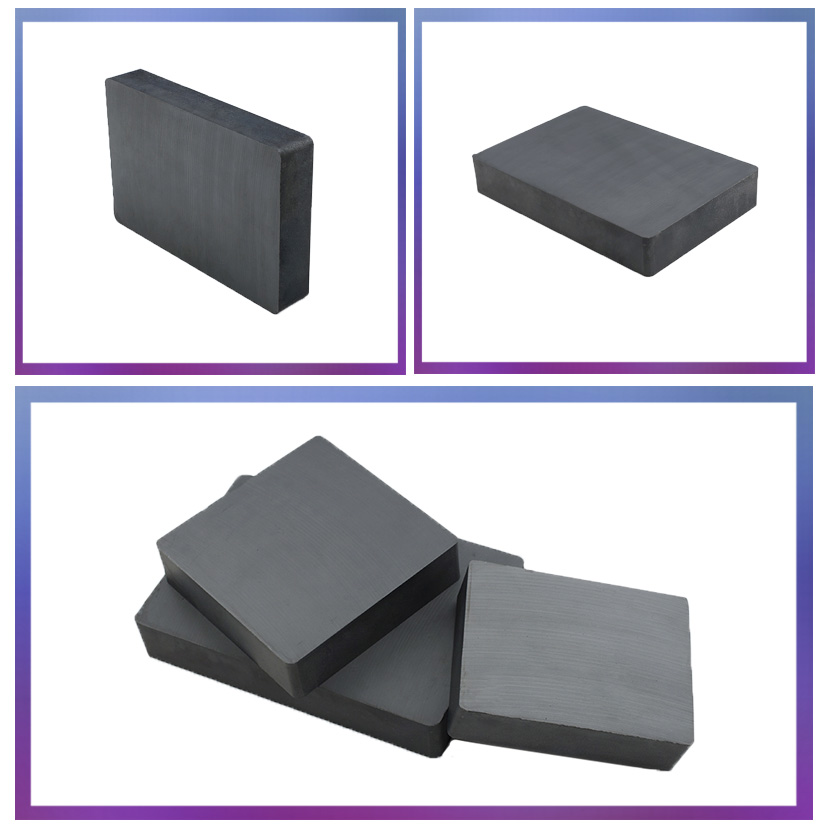
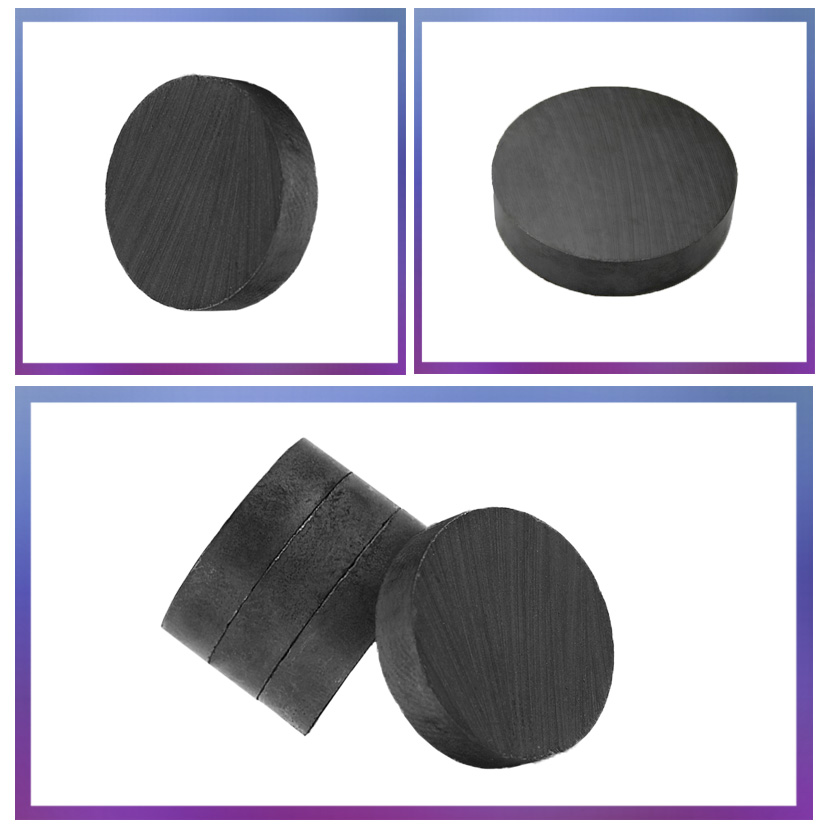
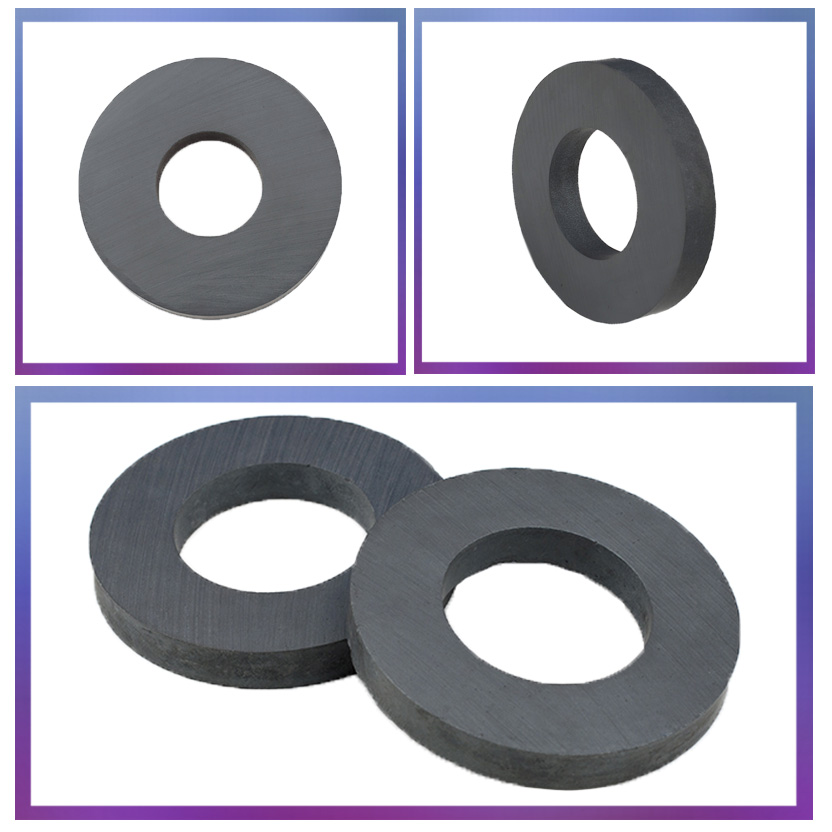
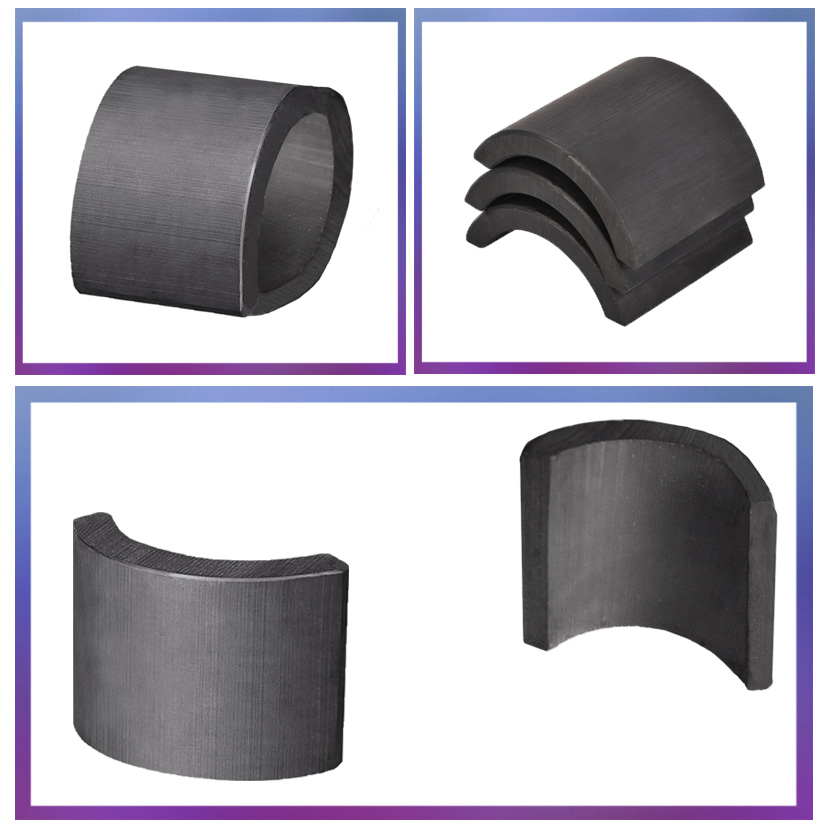
Ferrite Magnet,Ceramic Ferrite Magnet,Ferrite Permanent Magnet,Ferrite Ring Magnet,Construction Magnet
NINGBO SHINE MAGENETIC TECHNOLOGY CO.,LTD , https://www.shinemagnets.com








